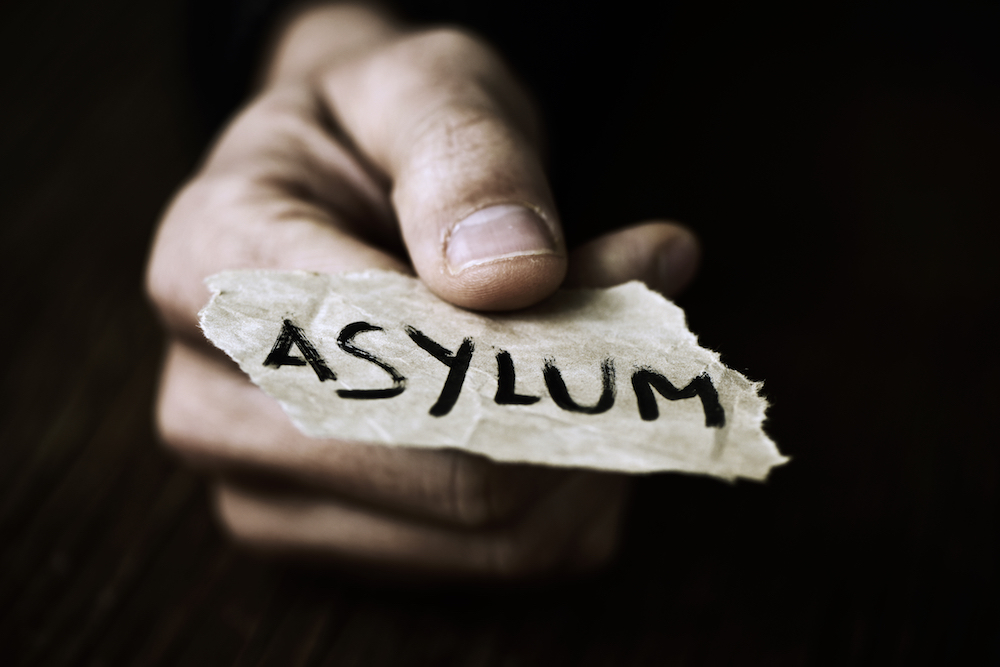When are USPTO Filings ‘Involuntary’?
“It is difficult to avoid the conclusion that the majority in Dragon created a bright line rule: if you file for IPR, either before or after you are sued for infringement, the proceeding is deemed voluntary, and you will not recover fees expended in that proceeding.”]/ipw_quote]
In Dragon Intellectual Property LLC v. Dish Network LLC, – (Fed. Cir., May 20, 2024), a divided panel of the U. S. Court of Appeals for the Federal Circuit held that a prevailing defendant in an otherwise “exceptional” patent infringement case could not recover attorney fees expended in a parallel inter partes review (IPR) proceeding because the defendant’s initiation of the IPR was “voluntary.” The court ostensibly drew a bright line between Dish’s “voluntary” U.S. Patent and Trademark Office (USPTO) filing and the purportedly “involuntary” filing at issue in a 1988 Federal Circuit case. I respectfully suggest that the earlier case was wrongly decided and that there is no meaningful difference between the fact patterns in the two cases.
The 2024 Dragon Case
Dish and others were sued for patent infringement in the District of Delaware. Dish subsequently filed an IPR petition and the litigation was stayed pending the outcome of the IPR, which proved to be successful. In earlier appeals, the Federal Circuit had affirmed the invalidity of the claims and held that the case was exceptional under 35 U.S.C. §285 because of the successful invalidation of the asserted patent claims in the IPR. Slip op. at 4.
In deciding the fee request, the District Court had declined to award fees which were incurred solely in connection with the IPR. The Federal Circuit majority agreed, holding that Dish had “voluntarily pursued parallel proceedings in front of the [Patent Trial and Appeal] Board instead of arguing invalidity before the district court.” Id. at 8.
The dissent argued that Dish was “compelled to contest the validity of Dragon’s patents in response to Dragon’s meritless infringement suit” and “exercised [its] option to litigate [the] affirmative invalidity defenses in IPR.” Dissent at 2. It suggested that the situation might be different if Dish had initiated IPR proceedings before Dragon filed suit. Id. It also took issue with the majority’s “parallel” characterization, noting that, presumably in light of the stay, Dish was not “litigating invalidity, or anything else, in parallel in the district court.” Id. at 3.
The 1988 PPG Case
The Federal Circuit majority in Dragon distinguished its earlier decision in PPG Indus., Inc. v. Celanese Polymer Specialties Co., 840 F. 2d 1565 (Fed. Cir. 1988). The court in Dragon stated that, in PPG, it had awarded fees incurred by a defendant in a USPTO reissue proceeding:
“…on the grounds that the defendant’s participation in the reissue proceedings was ‘not optional’ because the plaintiff [in PPG] had initiated the reissue proceedings and ‘forced’ the defendant to perform before the Board ‘precisely the same type of work’ the defendant would have performed at trial, so the defendant ‘had no other option available.’”
Dragon, slip op. at 9, quoting PPG, 840 F. 2d at 1568.
I respectfully suggest that it’s a bit more complicated.
The Dann Amendments
The PPG situation developed during the heyday of the so-called “Dann Amendments” to certain USPTO regulations, which amendments were promulgated in the late 1970s. This was decades before IPR proceedings and even before ex parte reexamination. Prior to the Dann Amendments, and apart from an interference, there was effectively no way for an accused infringer to invalidate a patent except through a district court infringement suit.
The Dann Amendments removed certain impediments to filing an application to reissue a patent. Importantly, it allowed for participation in such proceedings by entities seeking to invalidate a patent.
In short order, it became the wild west. Patentees would file reissue applications and seek to stay their own infringement cases. In some instances, defendants would urge courts to order patentees to file for reissue. Some courts did so. Some defendants eagerly participated in these proceedings. Others were reluctant, hoping that the USPTO would invalidate the patent without their input, but if they didn’t, they could have a second bite at the apple in court when the stay was lifted. Some patentees urged judges to order defendants to participate, and some judges did so. All parties were concerned about being bound by an adverse outcome in the USPTO reissue proceedings, and some agreed to be bound to incentivize the judge to grant a stay. While the Court of Customs and Patent Appeals had appellate jurisdiction over such reissue proceedings, there was no court with centralized appellate jurisdiction over all patent infringement cases until the Federal Circuit opened for business in 1982.
It was in this environment that the fee issue in PPG arose. The facts were straightforward. PPG sued Celanese for infringement. PPG wished to bring a prior art reference before the USPTO. It filed for reissue and moved the Court to stay, a motion which Celanese opposed. “PPG agreed to be bound on all issues considered by the outcome of the reissue proceeding.” PPG, 840 F. 2d at 1566. There is no indication whether Celanese agreed to be bound. One has to believe the court would have mentioned it had Celanese agreed, though it proved to be a moot point because the defendant prevailed.
Although the PPG opinion does state that Celanese’s participation in the reissue was not optional, it is replete with language which suggests it was indeed optional. See id. at 1568 (noting that the USPTO “permitted” Celanese’s participation; PPG argued that reissue proceedings would “permit” both sides to present; the Dann Amendments “permitted” Celanese’s extensive participation.) Permitting is not the same thing as requiring.
The Federal Circuit in PPG stated, “The parties and the district court clearly intended to replace the district court litigation with the reissue proceedings.” Id. While the patentee PPG was apparently content with such replacement, and while the district court was presumably content to remove a patent case from its active docket, I see nothing in the court opinions indicating that defendant Celanese was of the same view.
There is no suggestion in PPG or in Dragon’s discussion of PPG that the court had actually ordered Celanese to participate. To be sure, during those Dann Amendments days, it was not unheard of for a judge to order a defendant to participate in a reissue proceeding. See, e.g., Sauder Indus., Inc. v. The Carborundum Co., 205 U.S.P.Q. (BNA) 240, 1978 WL 21382 (N. D. Ohio 1978) (on plaintiff’s motion to stay pending reissue proceedings, “Defendant shall participate in the proceedings for such reissue applications before the PTO to the extent permitted by law or the PTO.”(Emphasis added.))
It is difficult if not impossible at this remove for an uninvolved observer to know whether Celanese was under some pressure to participate that is not reflected in the dry opinions. Still, one can imagine this sort of dialogue between counsel and district judge on a motion to stay:
JUDGE: So what happens after the reissue is over?
PLAINTIFF: Well, we agree to be bound by the PTO’s decision, so if we lose, it’s over.
JUDGE: What about defendant?
DEFENDANT: We believe we would have the right to litigate the issue before Your Honor if we think the PTO gets it wrong.
JUDGE: Well, I will tell you I’m going to think long and hard before disagreeing with the experts at the PTO. So maybe you should think long and hard before passing up an opportunity to present your case at the PTO.
What’s Next?
It is difficult to avoid the conclusion that the majority in Dragon created a bright line rule: if you file for IPR, either before or after you are sued for infringement, the proceeding is deemed voluntary, and you will not recover fees expended in that proceeding. Given that apparent conclusion, one cannot help but wonder whether the judges in the majority in Dragon believed that perhaps PPG was wrongly decided. If they did, they could not formally overrule PPG without an en banc decision; so they seem to have taken at face value the holding that Celanese’s participation in the reissue was involuntary under the unique facts of that case.
In my view, the two decisions are difficult to reconcile. In neither case (so far as we can tell) was the defendant ordered to participate in USPTO proceedings, or required to do so by any statute, regulation, or court rule.
While Celanese was obviously under some pressure to participate in PPG’s reissue, Dish faced pressures to file for IPR as well. If Dragon’s lawsuit placed a cloud over Dish, as the majority pointed out, the IPR route promised a decision within one year. Dragon, slip op. at 8. The IPR gave Dish a less onerous burden of proof. See id. And if Dish believed it would be at a disadvantage before a jury, the IPR obviated that concern.
It is true that, under Dragon, in some cases, where a successful IPR is filed early in a litigation, only a small fraction of the total fees expended by the defendant may be recovered. But it is worth mentioning that, typically, the total cost of an IPR is dramatically less than the cost of a full blown district court litigation. And recovering fees is never a sure thing. The fact that IPR is a good investment is borne out by the fact that “the vast majority of IPR petitioners are sued by patent owners in another venue before filing petitions.” Dragon, slip op. at 8 (cleaned up).
Image rights acquired by AdobeStock






